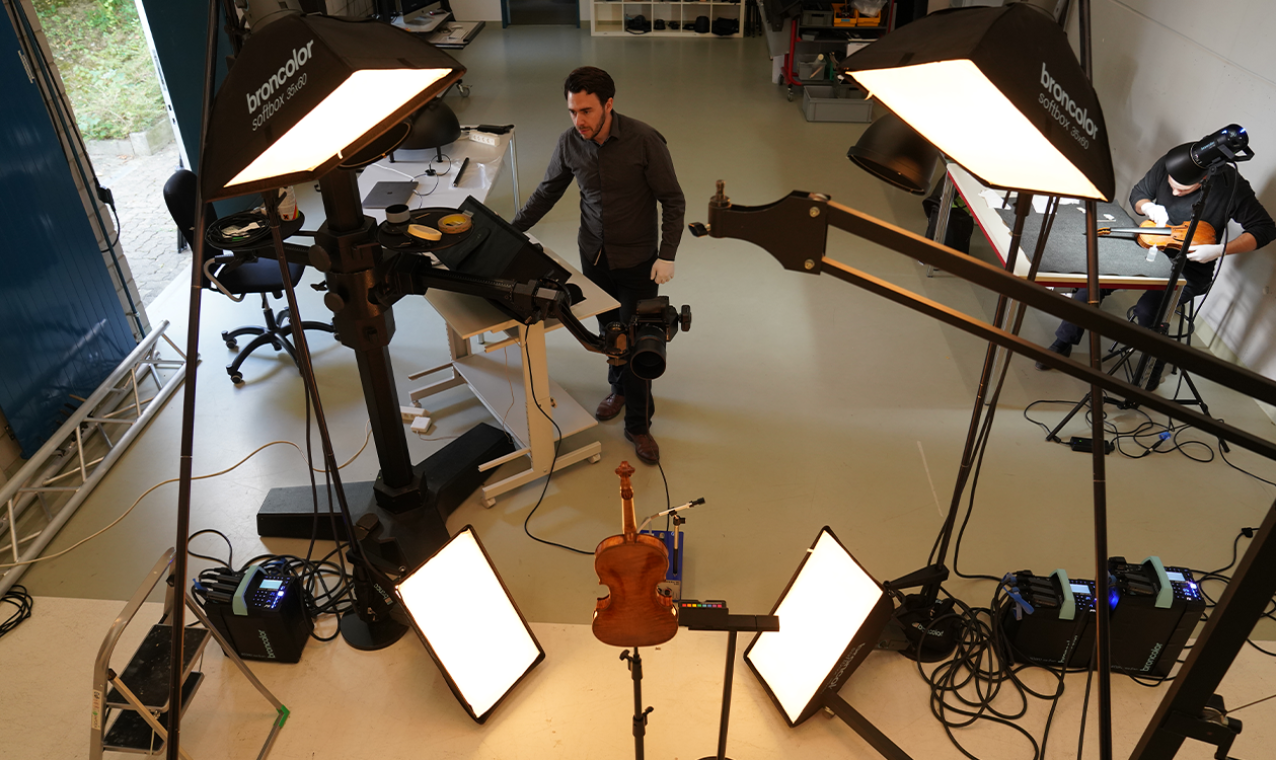Balthazar Soulier and Josselin Riehl from Atelier Cels reveal some insights about the photographic documentation of two emblematic violins from a private collection. The 303-year-old “Benno Walter”, Antonio Stradivari violin from 1718, and the 277-year-old “Sainton”, Giuseppe Guarneri ‘del Gesù’ violin from 1744, the final year of Guarneri's short life. Discover the photography and documentation process of these unique violins using state-of-the-art broncolor lighting equipment.
Atelier Cels are recognized specialists in the field of conservation and expertise of fine old stringed instruments. For many years, Atelier Cels is working with broncolor lighting that ensures outstanding fidelity and reproducibility of light. This is one of the crucial requirements in the field of cultural heritage photography.
High-quality photography provides essential information about the shape, motif, texture and colours of the surfaces. Coupled with UV illumination, photography also enables to localize precisely the original varnish and possible contaminations.

Violins present a real challenge for colour photography. The nuances of the colour spectrum are extremely subtle, from yellow-orange to transparent reds. The complex arching surfaces covered with shiny, transparent layers create disturbing reflections and shadows. In addition, the motif of the wood changes depending on the direction of the light. Micro details and colour nuances have to be characterized with the highest possible precision in order to record the specific features of each instrument and to detect any changes over time.
"It is important to produce extremely sharp images over a large depth of field while avoiding distortions and spurious reflections. As we often shoot in a stacking mode, we need an identical and powerful light during each and all stacking acquisition. Accurate and reproducible colour temperature is crucial to detect and monitor possible changes over time."
Balthazar Soulier, Atelier Cels

















